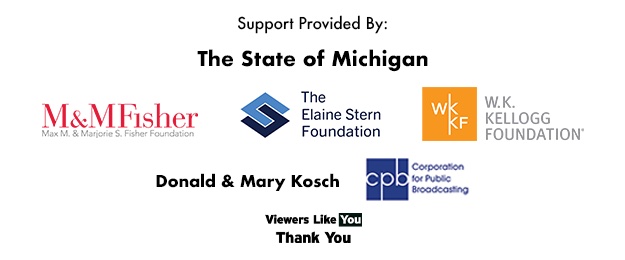Grades
Standard
Students find or organize data and use technology to analyze and represent it to solve problems and make decisions.
Students break problems into component parts, identify key pieces and use that information to problem solve.
Students demonstrate an understanding of how automation works and use algorithmic thinking to design and automate solutions.
Students communicate clearly and express themselves creatively for a variety of purposes using the platforms, tools, styles, formats and digital [...]
Students select appropriate platforms and tools to create, share and communicate their work effectively.
Students create original works or responsibly repurpose other digital resources into new creative works.
Students communicate complex ideas clearly using various digital tools to convey the concepts textually, visually, graphically, etc
Students publish or present content designed for specific audiences and select platforms that will effectively convey their ideas to those [...]
Students use digital tools to broaden their perspectives and enrich their learning by collaborating with others and working effectively in [...]
Students recognize and utilize the features and functions of a variety of creation or communication tools.
Student create original works and learn strategies for remixing or repurposing to create new artifacts.
Students create digital artifacts to communicate ideas visually and graphically.
Students learn about audience and consider their expected audience when creating digital artifacts and presentations.
Students use digital tools to broaden their perspectives and enrich their learning by collaborating with others and working effectively in [...]
Students use digital tools to work with friends and people from different backgrounds or cultures.
Students use collaborative technologies to connect with others, including peers, experts and community members, to explore different points of view [...]
Students perform a variety of roles within a team using age-appropriate technology to complete a project or solve a problem.
Students work with others using collaborative technologies to explore local and global issues.
Students leverage technology to take an active role in choosing, achieving and demonstrating competency in their learning goals, informed by [...]
Students articulate personal learning goals, select and manage appropriate technologies to achieve them, and reflect on their successes and areas [...]
Students identify and develop online networks within school policy, and customize their learning environments in ways that support their learning, [...]
Students actively seek performance feedback from people, including teachers, and from functionalities embedded in digital tools to improve their learning [...]
Students are able to navigate a variety of technologies and transfer their knowledge and skills to learn how to use [...]
Students recognize the rights, responsibilities and opportunities of living, learning and working in an interconnected digital world, and they act [...]
Students manage their digital identities and reputations within school policy, including demonstrating an understanding of how digital actions are never [...]
Students demonstrate and advocate for positive, safe, legal and ethical habits when using technology and when interacting with others online.
Students demonstrate and advocate for an understanding of intellectual property with both print and digital media—including copyright, permission and fair [...]
Students demonstrate an understanding of what personal data is and how to keep it private and secure, including the awareness [...]
Students critically curate a variety of resources using digital tools to construct knowledge, produce creative artifacts and make meaningful learning [...]
Students recognize the rights, responsibilities and opportunities of living, learning and working in an interconnected digital world, and they act [...]
Students demonstrate an understanding of the role an online identity plays in the digital world and learn the permanence of [...]
Students practice and encourage others in safe, legal and ethical behavior when using technology and interacting online, with guidance from [...]
Students learn about, demonstrate and encourage respect for intellectual property with both print and digital media when using and sharing [...]
Students critically curate a variety of resources using digital tools to construct knowledge, produce creative artifacts and make meaningful learning [...]
Students collaborate with a teacher to employ appropriate research techniques to locate digital resources that will help them in their [...]
Students learn how to evaluate sources for accuracy, perspective, credibility and relevance.
Using a variety of strategies, students organize information and make meaningful connections between resources.
Students explore real-world problems and issues and collaborate with others to find answers or solutions.
Students use a variety of technologies within a design process to solve problems by creating new, useful or imaginative solutions.
Students explore and practice how a design process works to generate ideas, consider solutions, plan to solve a problem or [...]
Students use digital and non-digital tools to plan and manage a design process.
Students engage in a cyclical design process to develop prototypes and reflect on the role that trial and error plays.
Students demonstrate perseverance when working with open-ended problems.
Students develop and employ strategies for understanding and solving problems in ways that leverage the power of technological methods to [...]
Students explore or solve problems by selecting technology for data analysis, modeling and algorithmic thinking, with guidance from an educator.
Students select effective technology to represent data.
Students break down problems into smaller parts, identify key information and propose solutions.
Students understand and explore basic concepts related to automation, patterns and algorithmic thinking.
Students communicate clearly and express themselves creatively for a variety of purposes using the platforms, tools, styles, formats and digital [...]
Students develop and employ strategies for understanding and solving problems in ways that leverage the power of technological methods to [...]
Grades
Standard
Students find or organize data and use technology to analyze and represent it to solve problems and make decisions.
Students break problems into component parts, identify key pieces and use that information to problem solve.
Students demonstrate an understanding of how automation works and use algorithmic thinking to design and automate solutions.
Students communicate clearly and express themselves creatively for a variety of purposes using the platforms, tools, styles, formats and digital [...]
Students select appropriate platforms and tools to create, share and communicate their work effectively.
Students create original works or responsibly repurpose other digital resources into new creative works.
Students communicate complex ideas clearly using various digital tools to convey the concepts textually, visually, graphically, etc
Students publish or present content designed for specific audiences and select platforms that will effectively convey their ideas to those [...]
Students use digital tools to broaden their perspectives and enrich their learning by collaborating with others and working effectively in [...]
Students recognize and utilize the features and functions of a variety of creation or communication tools.
Student create original works and learn strategies for remixing or repurposing to create new artifacts.
Students create digital artifacts to communicate ideas visually and graphically.
Students learn about audience and consider their expected audience when creating digital artifacts and presentations.
Students use digital tools to broaden their perspectives and enrich their learning by collaborating with others and working effectively in [...]
Students use digital tools to work with friends and people from different backgrounds or cultures.
Students use collaborative technologies to connect with others, including peers, experts and community members, to explore different points of view [...]
Students perform a variety of roles within a team using age-appropriate technology to complete a project or solve a problem.
Students work with others using collaborative technologies to explore local and global issues.
Students leverage technology to take an active role in choosing, achieving and demonstrating competency in their learning goals, informed by [...]
Students articulate personal learning goals, select and manage appropriate technologies to achieve them, and reflect on their successes and areas [...]
Students identify and develop online networks within school policy, and customize their learning environments in ways that support their learning, [...]
Students actively seek performance feedback from people, including teachers, and from functionalities embedded in digital tools to improve their learning [...]
Students are able to navigate a variety of technologies and transfer their knowledge and skills to learn how to use [...]
Students recognize the rights, responsibilities and opportunities of living, learning and working in an interconnected digital world, and they act [...]
Students manage their digital identities and reputations within school policy, including demonstrating an understanding of how digital actions are never [...]
Students demonstrate and advocate for positive, safe, legal and ethical habits when using technology and when interacting with others online.
Students demonstrate and advocate for an understanding of intellectual property with both print and digital media—including copyright, permission and fair [...]
Students demonstrate an understanding of what personal data is and how to keep it private and secure, including the awareness [...]
Students critically curate a variety of resources using digital tools to construct knowledge, produce creative artifacts and make meaningful learning [...]
Students recognize the rights, responsibilities and opportunities of living, learning and working in an interconnected digital world, and they act [...]
Students demonstrate an understanding of the role an online identity plays in the digital world and learn the permanence of [...]
Students practice and encourage others in safe, legal and ethical behavior when using technology and interacting online, with guidance from [...]
Students learn about, demonstrate and encourage respect for intellectual property with both print and digital media when using and sharing [...]
Students critically curate a variety of resources using digital tools to construct knowledge, produce creative artifacts and make meaningful learning [...]
Students collaborate with a teacher to employ appropriate research techniques to locate digital resources that will help them in their [...]
Students learn how to evaluate sources for accuracy, perspective, credibility and relevance.
Using a variety of strategies, students organize information and make meaningful connections between resources.
Students explore real-world problems and issues and collaborate with others to find answers or solutions.
Students use a variety of technologies within a design process to solve problems by creating new, useful or imaginative solutions.
Students explore and practice how a design process works to generate ideas, consider solutions, plan to solve a problem or [...]
Students use digital and non-digital tools to plan and manage a design process.
Students engage in a cyclical design process to develop prototypes and reflect on the role that trial and error plays.
Students demonstrate perseverance when working with open-ended problems.
Students develop and employ strategies for understanding and solving problems in ways that leverage the power of technological methods to [...]
Students explore or solve problems by selecting technology for data analysis, modeling and algorithmic thinking, with guidance from an educator.
Students select effective technology to represent data.
Students break down problems into smaller parts, identify key information and propose solutions.
Students understand and explore basic concepts related to automation, patterns and algorithmic thinking.
Students communicate clearly and express themselves creatively for a variety of purposes using the platforms, tools, styles, formats and digital [...]
Students develop and employ strategies for understanding and solving problems in ways that leverage the power of technological methods to [...]


